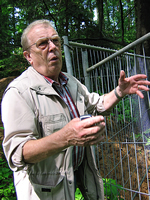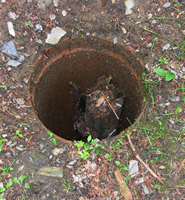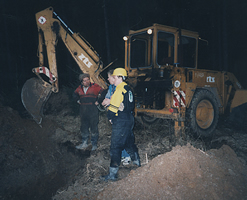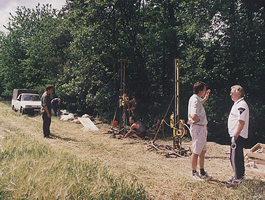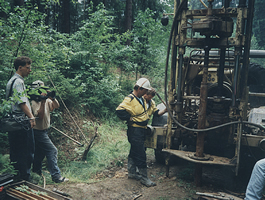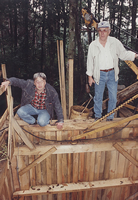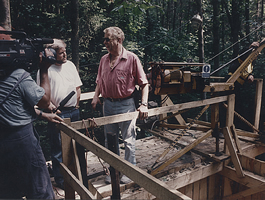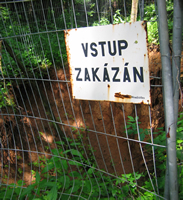Treasure of Štěchovice

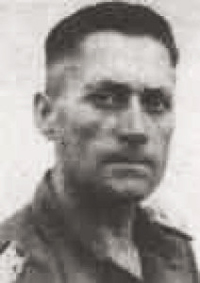 - April 18, 1945 a special train with lorries left Berlin, transporting 460 boxes
- April 18, 1945 a special train with lorries left Berlin, transporting 460 boxes
- April 20, night, last two accessible planes JU – 52 transporting 80 boxes departed from Berlin
- both groups left for the only possible and safe direction, eastward to the Protectorate of Bohemia and Moravia, all the boxes arrived to Prague April 22
- any further trip was impossible regarding the fast moving front, Martin Borman signed an order in Berlin: Everything must be safely hidden.
- the task is given to the colonel Emil Klein, the commanding officer of the Pioneer School of SS in Hradištko
- all the boxes were transferred from Prague to the tunnel prepared in Hradištko; Russian and French prisoners of war, from the concentration camp nearby, stored them under ground and masked them; once the work had been done they were all gunned down by the SS guard; next step – Klein and his adjutant Steige massacred the SS guard
- in May 1945 Klein refused to fulfil the order to blow the Prague bridges and the Štěchovice dam and let himself be taken prisoner of the Americans
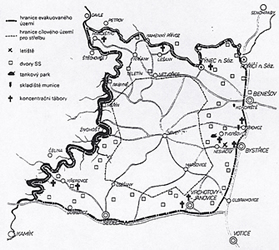
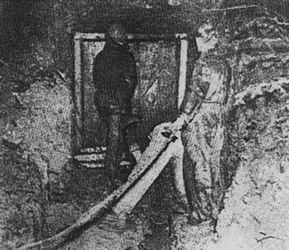
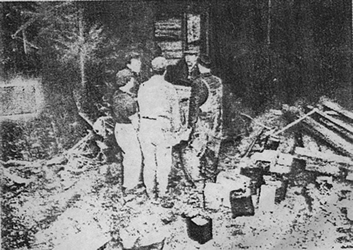
- February 11, 1946, a group of American soldiers came to Hradištko, accompanied by a German officer Günter Aschenbach. The group opened up a tunnel, unknown so far, and takes a number of boxes to Frankfurt. The Czechoslovak authorities were not aware of the procedure.
- March 7, 1946, the delivery was given back to the Czechoslovak authorities – it concerned part of Frank’s archives (since then the place is called Frank’s tunnel); the documents treat the possible Germanization of Bohemia and Moravia. The Americans probably expected to find documents on the results of military research and weaponry systems that the German Army could not use in the War.
- end of the year 1946 – Klein – after being transferred to the Czechoslovak authorities he was questioned in relation to the Štěchovice treasure and there were hints of more boxes being hidden in Štěchovice area. The Ministry of Interior searched in the ravine Dušno with no result.
- in 1949 the Defence Minister Alexej Čepička closed the area down with the military estate order
- in 1963 based on the reports of Soviet scouting patrol from Vienna a new search campaign of 1963-1964 started, with the help of geological survey and other modern methods, with no result
- spring 1963 – Helmut Gaensel meets Emil Klein in Valdice prison while serving his sentence
- December 24, 1964 – Klein was extradited to Germany (in the exchange for the agent Abel) and was often paid visit by Helmut Gaensel released from prison
- 60s Gaensel was travelling in South America
- 1968 – Gaensel discussed the possibility of taking out the treasure with the Czechoslovak authorities but the arrival of the allied armies terminated all the activities, Gaensel left Czechoslovakia
- 1973 – Emil Klein died in Germany
- 70s – 1989 there were some attempts to pick up the Štěchovice treasure under the control of the Ministries of Interior and Defence, the last works had been done before the Revolution by the foreign trade company Omnipol, trading mainly with weapons
- since 1991 – Gaensel came back to Czechoslovakia to search for the Štěchovice treasure
- 90s Gaensel searched mainly in the ravine Dušno and surrounding area, few surveys were done also elsewhere
- 2004 – he localised a place in the Small Klein’s ravine where the seismic radar and other technologies confirmed the existence of ten meters long tunnel, Gaensel prepares its opening
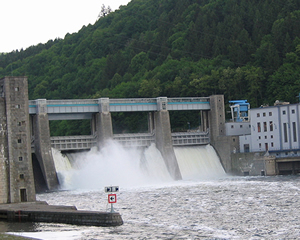 Štěchovice and Hradištko
Štěchovice and Hradištko
The area, limited by the two rivers Vltava and Sázava, and a line drawn from Poříčí nad Sázavou through Benešov, Bystřice, Vrchotovy Janovice, Sedlčany to the river Vltava, was evacuated during the Second World War to serve as a training ground for the SS weapons with the headquarters in Benešov. A Pionierschule SS was founded directly in Hradištko and Emil Klein came there in September 1942 as a temporary commander. Later he was appointed a commander with the title SS-Obersturmbanführer. In 1943 Germans founded “branch concentration camp” of the camp in Flossenburg. In the country around Hradištko there used to be many medieval tunnels, the remnants of gold mining, and the new underground works were made as a part of preparation activities of SS pioneers or as a cache for war industry products (Mednik, railway tunnels).
The SS pioneers disposed of chemical called Lixzyn-Apullen that can produce fiery glow and to join concrete with natural rock in a way that it is impossible to recognise the place from nature creation.
The entire area had been quiet until the very end of the War, there were no witnesses and Germans had the necessary technology there as well as the work force and appropriate underground cashes. The treasure of Štěchovice got its name after the larger and better known neighbouring village Štěchovice, which shall celebrate its 800 years of existence in 2005. This little town is on the other bank of river Vltava and it had its normal life as elsewhere during the Protectorate period. The geographic sign is the only common trait with the Archives and Treasure.
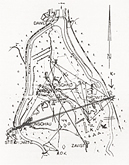
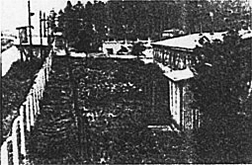
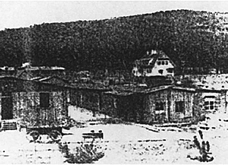
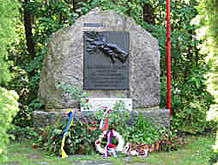
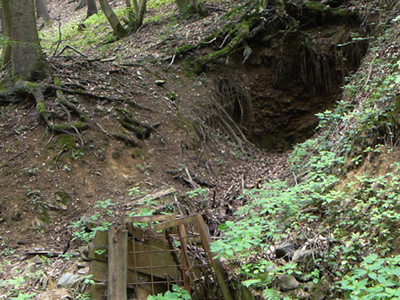 Treasure hunt
Treasure hunt
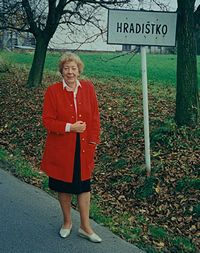 Near Hradištko is a new location which will soon be excavated. Why?
Near Hradištko is a new location which will soon be excavated. Why?
New information gathered by Helmut Gaensel from a relative of the fiance of Kurt Laub named Anny(her last name has been witheld due to wishes of her family) from Landshut in Bavaria. Kurt Laub was namely the leader of a military unit which witnessed an impregnable sarcophagus before it was deposited underground at the end of Apríl in 1945 at Hradištko. Kurt and Anny never married but their fates were forever linked. In Anny’s loving memory she remembered the trusted word and observations of Kurt. Documents from the end of the war are now in the hands of Helmut Gaensel and the new location for the treasure looks promising. His belief in his search confirms the new incidences of shovels lowered in and around the new location. 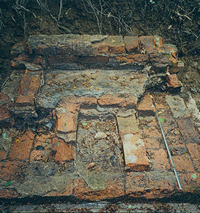 Everything now is leading up to the investigation of the new postion as long as the required permission is granted.
Everything now is leading up to the investigation of the new postion as long as the required permission is granted.
One of the most important witness statements comes from a member of the SS Elisabeth Obert, who stated that at the end of the war some very strange things were going on Hradištko. At her recent visit to Hradištko with Helmut Gaensel at her side, her first steps led to ravine of Slemín. She pointed out a place which she knew intimately. A place next to the air-raid shelter, and which she had visited uncountable times because she used to visit her daily her fiancé who at that time was an SS engineer officer and worked at the site. On 14 of April in 1945 they got married at Hradištko.
Here is her witness statement: „At the end of April in 1945 on my way over the foot-bridge I noticed an unbearable smell. I looked down from the foot-bridge and saw tens of boxes stored at the bottom of the ravine. 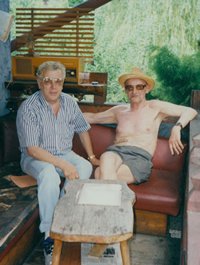 The soldiers were painting the boxes with some impregnating varnish. A couple of days later the boxes disappeared but I am sure that they had not left the ravine.”
The soldiers were painting the boxes with some impregnating varnish. A couple of days later the boxes disappeared but I am sure that they had not left the ravine.”
When Helmut Gaensel wanted to verify this fact he started to dig in the ravine. And what a surprise. Exactly at the described places he had found some remains of impregnation material but no traces of any boxes.
The existence of some hidden things was also confirmed by a British intelligence officer. As a young officer he was assigned to watch this area after the Americans dug out and took away some boxes from Frank gallery in February in 1946. According to his statement the British acquired information that there is a detailed plan of the whole underground area. Apparently it is sealed in an empty anti aircraft shell and was hidden; embed in concrete in one of the houses in Hrašdíštek. They even know that it is under the staircase of a private house. Who knows where…..
A German citizen Josef Drabesch has his own secrets. A man with a very questionable background. He took part in digs in Hradištko but his information proved useless. So far….
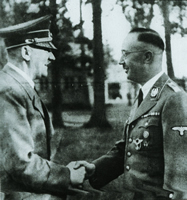
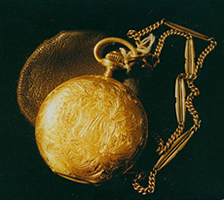
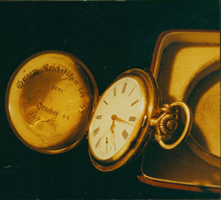
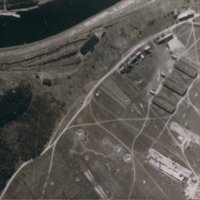
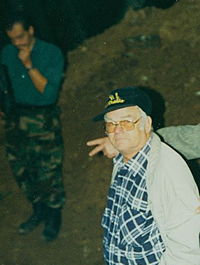 It is a well known fact that Adolf Hitler used to give gifts to his faithful. This watch was given to Heinrich Himmler – for his 44 birthday. They had known each other since 1923. He too had known about the hidden treasure at Hradištko but was unable to tell anybody about it. After his arrest on 22 of May in 1945 he committed a suicide.
It is a well known fact that Adolf Hitler used to give gifts to his faithful. This watch was given to Heinrich Himmler – for his 44 birthday. They had known each other since 1923. He too had known about the hidden treasure at Hradištko but was unable to tell anybody about it. After his arrest on 22 of May in 1945 he committed a suicide.
The latest information in Helmut Gaensel’s possession. A photograph taken by reconnaissance aircraft in March 1945. A significant fact Helmut Gaensel had not known about is the shooting range at the bottom right side of the picture. Helmut Gaensel has not known about it – his search was based on location of other shooting range which is still on record at present. Now it is becoming evident that the witnesses talked about the shooting range shown in the picture. It is clear that Helmut Gaensel has to reassess his objectives before starting his new digs. He is supported by several sponsor groups from the USA as well as from Germany. They all want to renew the digs in a grand scale.
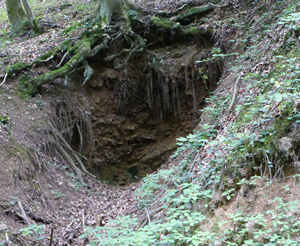
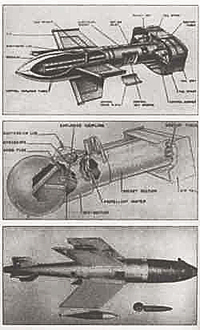 What is hidden under ground
What is hidden under ground
Scientific discoveries, secret weapons
NFor example a plane in the form of discus developed in Avie Čakovice, according to some sources. Spare parts were produced in a secret factory in Luka pod Medníkem. The real interest today could be the system of drive of the plane, even sixty years after the War. According to some speculations Germans tried to use anti-gravitation for the drive and we have not been successful in using it until today.
One of the theories mentions also experiments with anti-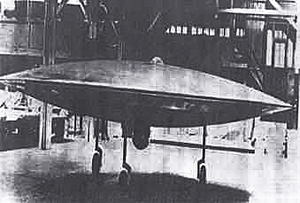 mass;Germans wanted to develop on its principle some type of “death rays”. In Prostějov the companyWichterle &Kovarik was working on the project of acoustic missile.
mass;Germans wanted to develop on its principle some type of “death rays”. In Prostějov the companyWichterle &Kovarik was working on the project of acoustic missile.
Gold, Jewels
Objects stolen all over Europe.
Objets d’art
Mainly the paintings from Göring’s collection and other valuable objects from entire Europe.
Finances
Reich marks and foreign currency, probably the passwords to nazi accounts in Swiss banks.
Amber Chamber
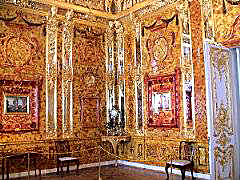 The heart of the Chamber was created for the occasion of enthronement of Prussian king Friedrich Wilhelm I in 1701 and until 1716 one of the salons in the Berlin Castle was decorated with amber. The Russian tzar visited Berlin in 1716 and as the Prussian king had wanted Russia to be his ally against Swedes, he offered the amber jewels to the tzar Peter I. The jewels went to Tzar Sel (Puskinovo today and a former summer location for tzar family), they were completed with Venetian mirrors and Florentine mosaic of semi-precious stones and were installed in Catherine’s Palace since 1775. Germans transported the entire salon to the castle in Königsberg (Kaliningrad). Since March 1944 its destiny becomes unclear. The Castle was seriously damaged during an air strike in August 1944 but the Chamber most probably survived. Some theories propose that it be destroyed because of drunk Russian soldiers in 1945 burning the rest of the Castle. Later some remnants of Florentine mosaic were discovered. According to some other witnesses the majority of jewels was transported in 126 boxes to the East.
The heart of the Chamber was created for the occasion of enthronement of Prussian king Friedrich Wilhelm I in 1701 and until 1716 one of the salons in the Berlin Castle was decorated with amber. The Russian tzar visited Berlin in 1716 and as the Prussian king had wanted Russia to be his ally against Swedes, he offered the amber jewels to the tzar Peter I. The jewels went to Tzar Sel (Puskinovo today and a former summer location for tzar family), they were completed with Venetian mirrors and Florentine mosaic of semi-precious stones and were installed in Catherine’s Palace since 1775. Germans transported the entire salon to the castle in Königsberg (Kaliningrad). Since March 1944 its destiny becomes unclear. The Castle was seriously damaged during an air strike in August 1944 but the Chamber most probably survived. Some theories propose that it be destroyed because of drunk Russian soldiers in 1945 burning the rest of the Castle. Later some remnants of Florentine mosaic were discovered. According to some other witnesses the majority of jewels was transported in 126 boxes to the East.
In 1997 the German police found a mosaic 55 x 70cm in Bremen and some German and Russian experts confirm that it is a part of the Amber Chamber. And the investigation protocol says that a German soldier the last days of War from boxes stored in German Weimar stole the piece.
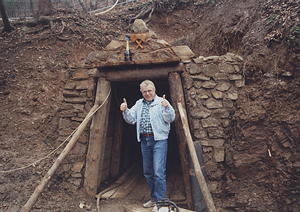 What had been already found
What had been already found
We have discovered some munitions, signals technologies and further military material from the Second World War during excavation works. One of the most interesting discoveries are the remnants of impregnation kiln and pieces of artificial rock, which had been tested in the area of Hradištko by German pioneers and was supposed to camouflage the treasure.
We have also noticed many tunnels from medieval times, monuments of gold mining in the area. Some of them were marked by additional adaptations in later periods.
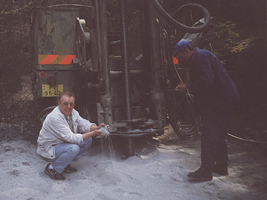
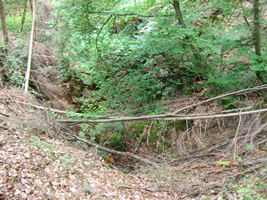
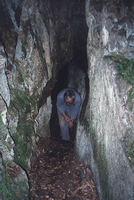
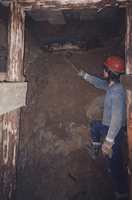
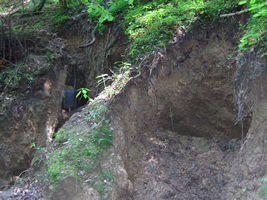
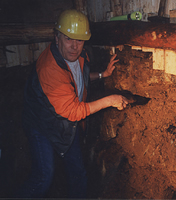
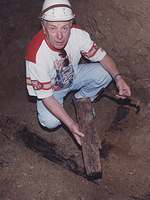
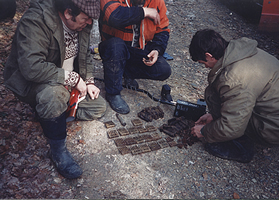
 Why it has not been found yet
Why it has not been found yet
Mainly because the exact location of the treasure is not known. According to the current knowledge there were a lot of materials hidden in this area. Apart from the Frank’s archives there were also the boxes from Berlin and scientific surveys prepared at the period in the Protectorate. It is possible as well that under ground, there are also prototypes of military technology, being also developed in the Protectorate. Therefore the so-called Treasure of Štěchovice might be spread out in smaller parts all over the area. The surface does not give any hints now, so the searcher has to be lucky in pointing at a correct place or drilling to the exact small space and it requires many tests costing a lot of money.
